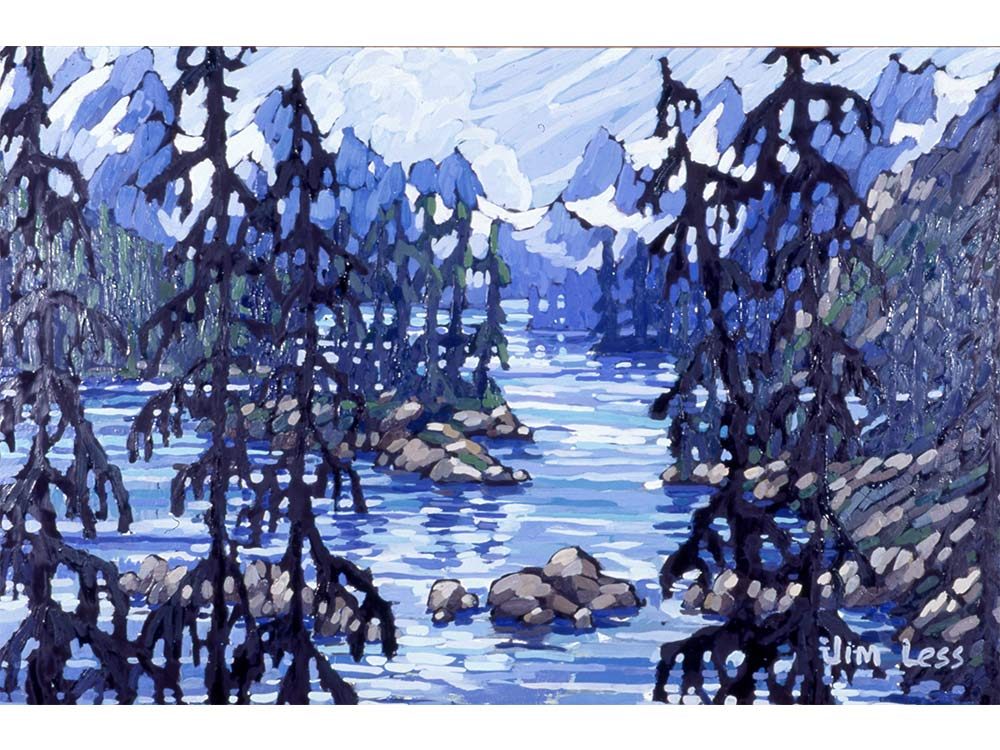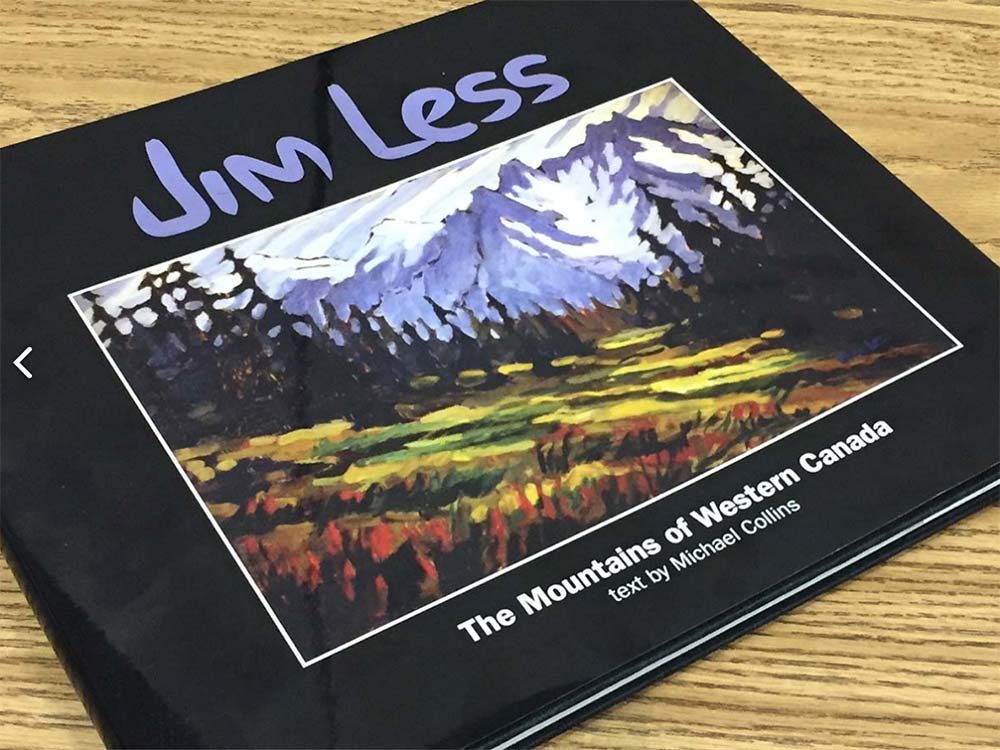
Excerpted from Jim Less: The Mountains of Western Canada
Jim Less was born in Clinton, Iowa on April 17, 1951. Shortly after receiving a degree in chemistry from Michigan Tech University, Jim emigrated to Canada.
When Jim first got to the country he wanted to do some exploring, and in the summer of 1974 Jim and I met an old bush pilot named Ralph Hathaway, then living on Vancouver Island. He told us about a place called Trout Lake in the middle of the Selkirk Mountains of the southern interior of British Columbia. Once there, we travelled up the road alongside the Lardeau Creek to Ferguson, a community which had thrived in the early years of the 20th century until the price of silver collapsed in the wake of World War I. Afterwards, the place became a ghost town, reduced to a mere seven buildings still standing with the townsite mostly meadow surrounded by forest and mountains. It is here that Jim settled and made his home.
Jim took teaching jobs away from Ferguson, in Prince Rupert, Mt. Currie, Revelstoke, the Okanagan, and various other locations in British Columbia, but as time went on he was able to devote more and more of his life to painting. During the last years of his life Jim exhibited at galleries in Nelson, Revelstoke, Banff, and Calgary. Jim died in Calgary, Alberta on April 4, 1995.
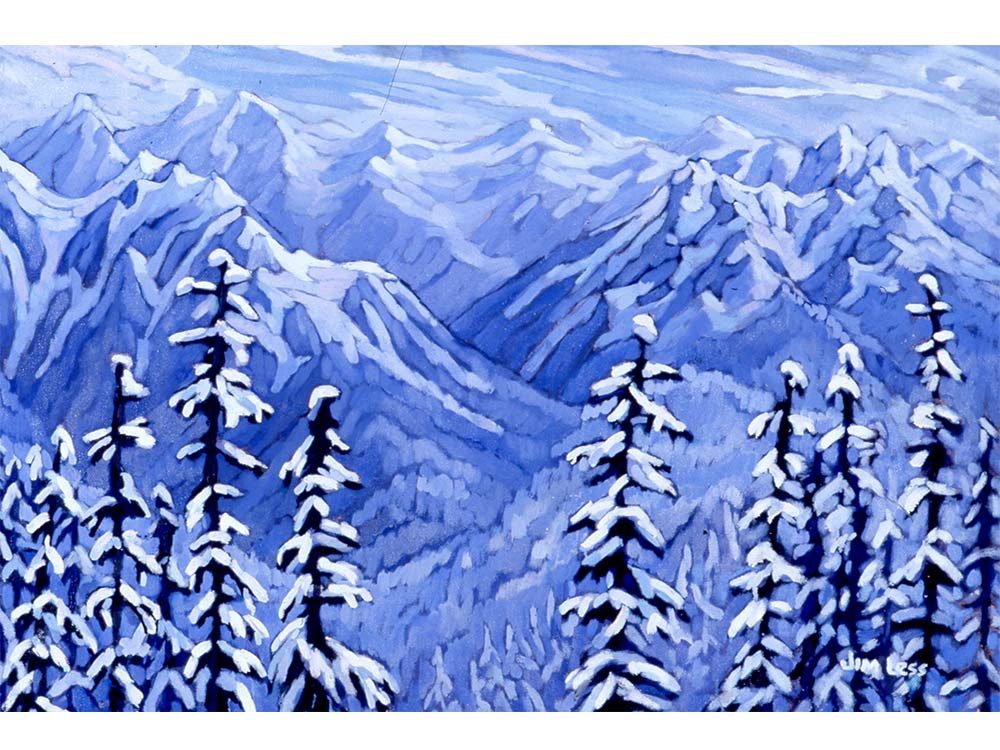
Lardeau Creek
Jim lived in one of British Columbia’s historic ghost towns. Ferguson is situated on the Lardeau River. This is the scene you would see looking up the valley from just a short ways from where his house was located. In summer, the rumble from water rushing down the mountains is audible throughout the valley. In winter, ice and snow blanket the stream so deeply that you can barely hear it.
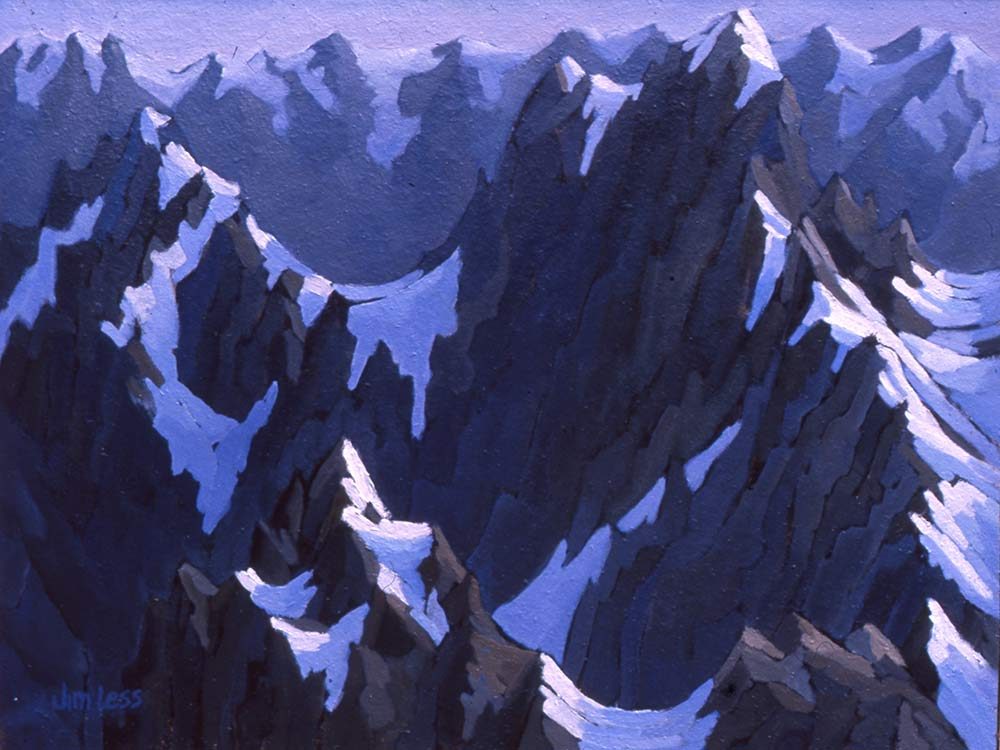
Approach to Mt. Homer
Fewer people are acquainted with the Selkirks and Purcells, but they are even more rugged than the Rocky Mountains. Even today only two roads pass through them, most famously at Roger’s Pass. The TransCanada highway through this area was not completed until 1961.
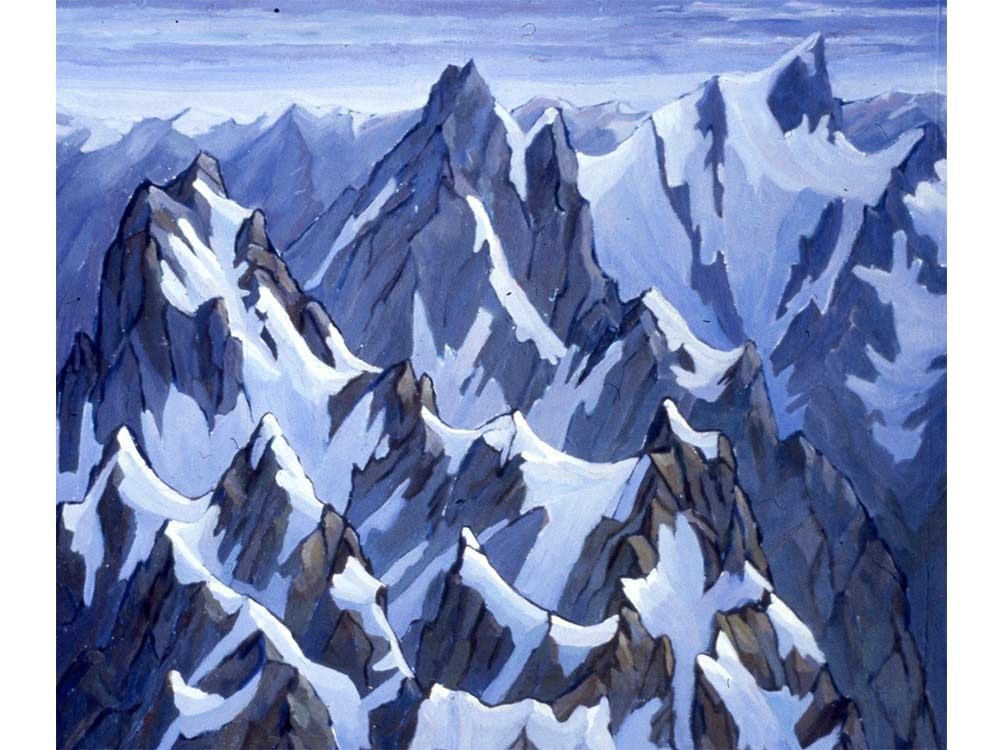
The Battle Range (Nemo Group)
Many of the peaks have names taken from literature and mythology that evoke conflict and strife. The names of many of the ranges and peaks in the Selkirks and Purcells are evocative. Some are descriptive. There are quite a few whose names relate to figures from folklore and literature.
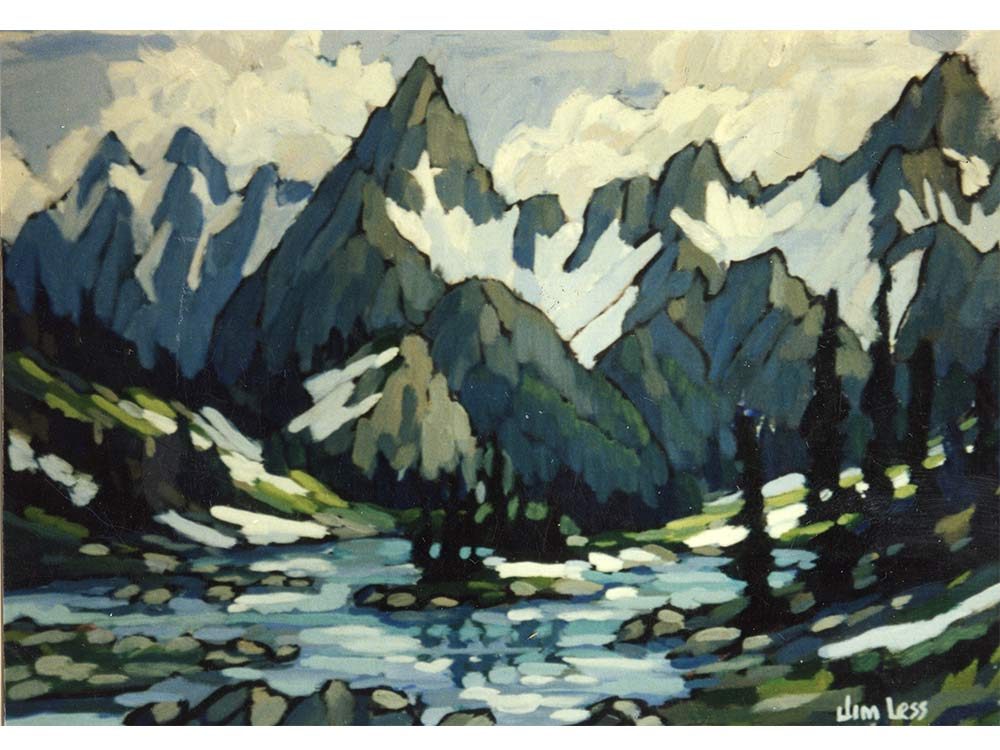
A Selkirk Lake
The tops of the mountains of British Columbia are mostly not visible from the valley floor. You need to get up into the high country to be able to see them.
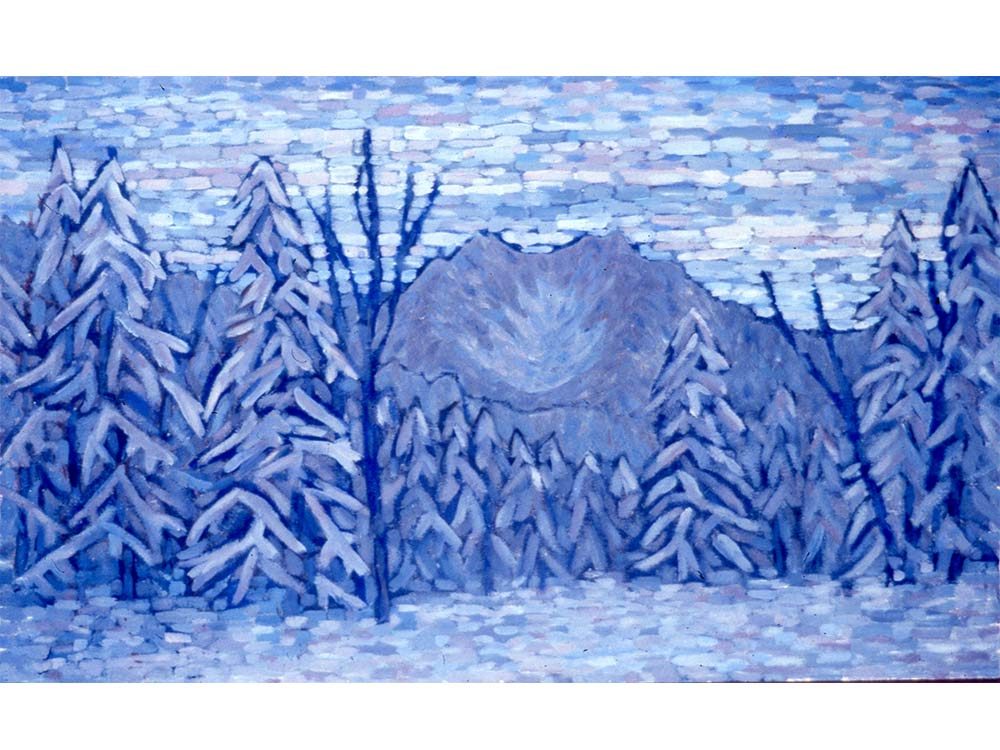
Trout Mt. in Winter
Snow covers the ground in Ferguson from October through to the end of May. At its deepest, in March, there can be more than 3 metres (10 feet) of it on the ground.
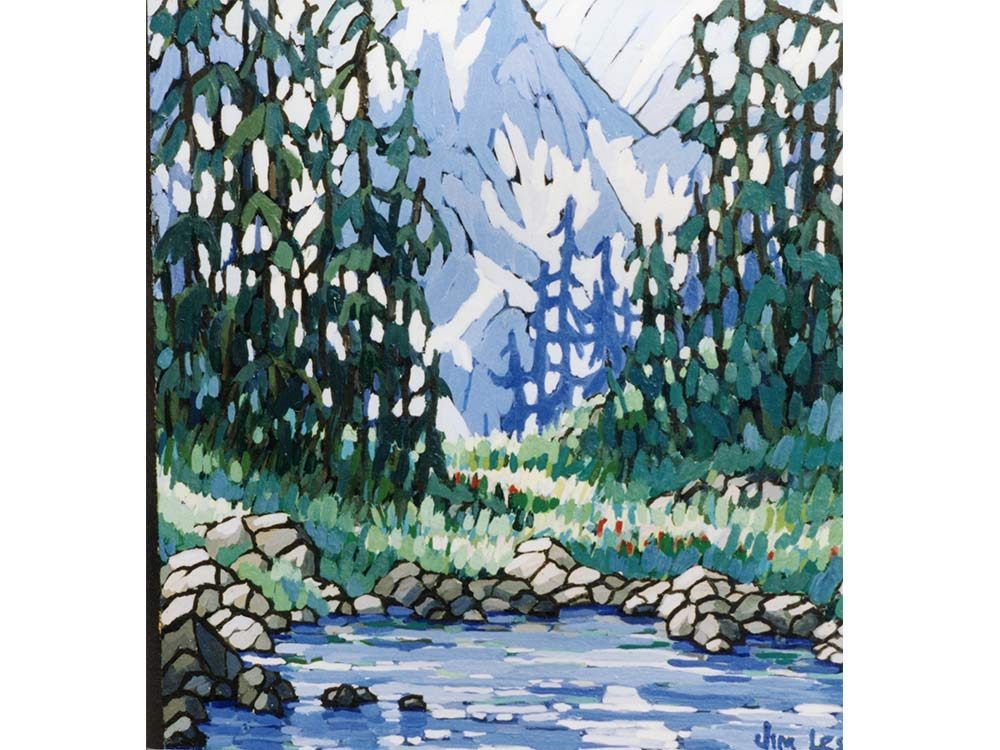
From Wilson Pass
In his final years it was difficult for Jim to make it all the way to the top of these mountains and he would settle for reaching a hidden valley or glacial lake. With less snow and ice and more trees and flowers, it is from this vantage point that he introduced more colour into his paintings.
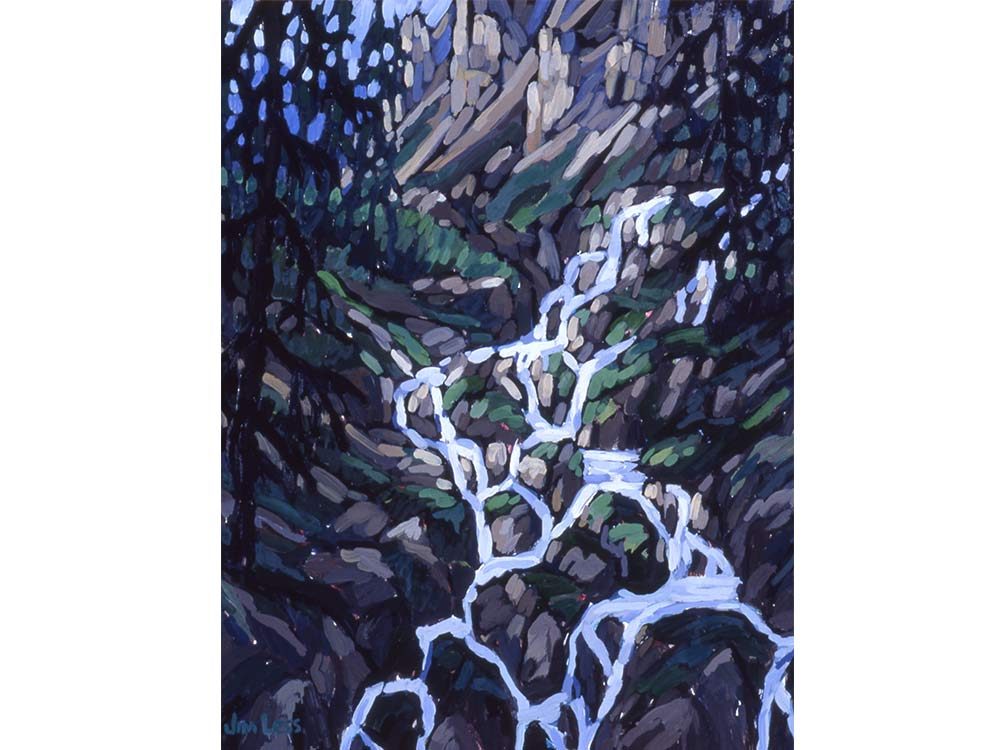
Whirlwinkle Creek
Whirlwinkle Creek flows right nearby and provided the water supply from Jim’s home in Ferguson. As you walk away from the road the terrain becomes steep very quickly, so much so that this creek is really a series of waterfalls.
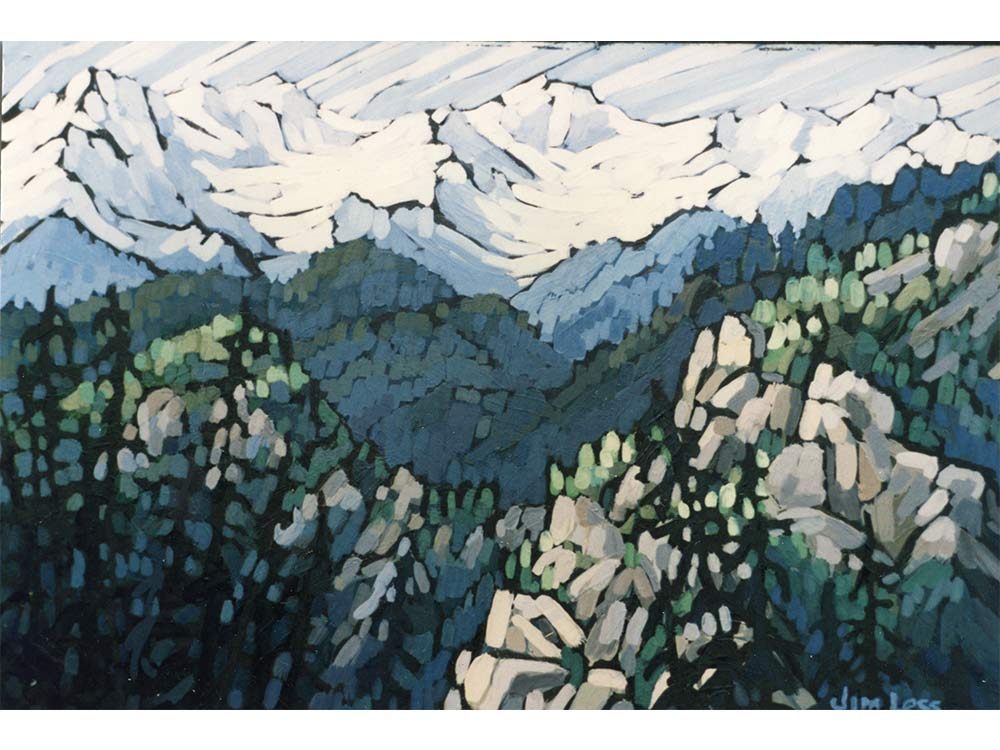
Tantalus Range
For a few years Jim lived near Mt. Currie. This is a view of the Tantalus Range just south of Whistler.
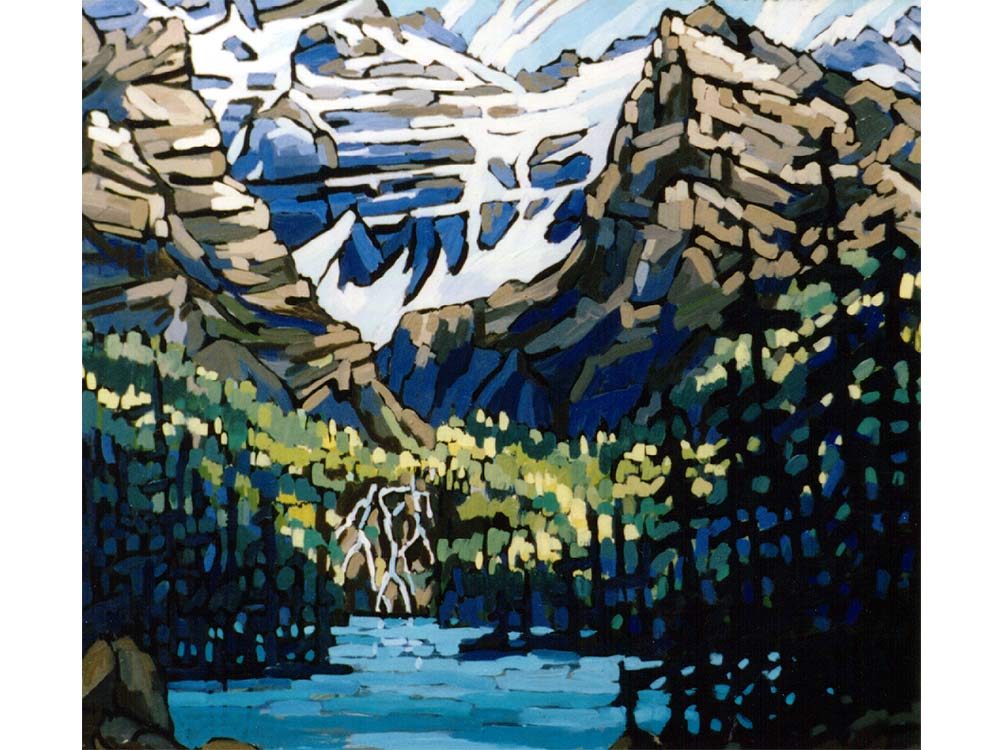
Cobalt Lake
One of the many stunning turquoise glacial lakes in the mountains of Western Canada.
Reprinted with permission from the book Jim Less: The Mountains of Western Canada by Michael Collins. All photographs, images and text copyright Michael Collins, 2015.
